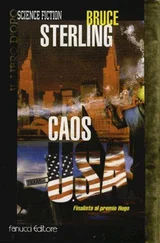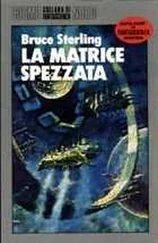Bruce Sterling - Essays. FSF Columns
Здесь есть возможность читать онлайн «Bruce Sterling - Essays. FSF Columns» весь текст электронной книги совершенно бесплатно (целиком полную версию без сокращений). В некоторых случаях можно слушать аудио, скачать через торрент в формате fb2 и присутствует краткое содержание. Жанр: Фантастика и фэнтези, на английском языке. Описание произведения, (предисловие) а так же отзывы посетителей доступны на портале библиотеки ЛибКат.
- Название:Essays. FSF Columns
- Автор:
- Жанр:
- Год:неизвестен
- ISBN:нет данных
- Рейтинг книги:3 / 5. Голосов: 1
-
Избранное:Добавить в избранное
- Отзывы:
-
Ваша оценка:
- 60
- 1
- 2
- 3
- 4
- 5
Essays. FSF Columns: краткое содержание, описание и аннотация
Предлагаем к чтению аннотацию, описание, краткое содержание или предисловие (зависит от того, что написал сам автор книги «Essays. FSF Columns»). Если вы не нашли необходимую информацию о книге — напишите в комментариях, мы постараемся отыскать её.
Essays. FSF Columns — читать онлайн бесплатно полную книгу (весь текст) целиком
Ниже представлен текст книги, разбитый по страницам. Система сохранения места последней прочитанной страницы, позволяет с удобством читать онлайн бесплатно книгу «Essays. FSF Columns», без необходимости каждый раз заново искать на чём Вы остановились. Поставьте закладку, и сможете в любой момент перейти на страницу, на которой закончили чтение.
Интервал:
Закладка:
the patient, and put the physician on surer ground with his diagnosis.
So why not just go ahead and take the test?
MRIs have gone ahead boldly. Unfortunately, miracles rarely
come cheap. Today the United States spends thirteen percent of its Gross
National Product on health care, and health insurance costs are
drastically outstripping the rate of inflation.
High-tech, high-cost resources such as MRIs generally go to to
the well-to-do and the well-insured. This practice has sad
repercussions. While some lives are saved by technological miracles --
and this is a fine thing -- other lives are lost, that might have been
rescued by fairly cheap and common public-health measures, such as
better nutrition, better sanitation, or better prenatal care. As advanced
nations go, the United States a rather low general life expectancy, and a
quite bad infant-death rate; conspicuously worse, for instance, than
Italy, Japan, Germany, France, and Canada.
MRI may be a true example of a technology genuinely ahead of
its time. It may be that the genius, grit, and determination of Raymond
Damadian brought into the 1980s a machine that might have been better
suited to the technical milieu of the 2010s. What MRI really requires for
everyday workability is some cheap, simple, durable, powerful
superconductors. Those are simply not available today, though they
would seem to be just over the technological horizon. In the meantime,
we have built thousands of magnetic windows into the body that will do
more or less what CAT-scan x-rays can do already. And though they do
it better, more safely, and more gently than x-rays can, they also do it
at a vastly higher price.
Damadian himself envisioned MRIs as a cheap mass-produced
technology. "In ten to fifteen years," he is quoted as saying in 1985,
"we'll be able to step into a booth -- they'll be in shopping malls or
department stores -- put a quarter in it, and in a minute it'll say you
need some Vitamin A, you have some bone disease over here, your blood
pressure is a touch high, and keep a watch on that cholesterol." A
thorough medical checkup for twenty-five cents in 1995! If one needed
proof that Raymond Damadian was a true visionary, one could find it
here.
Damadian even envisioned a truly advanced MRI machine
capable of not only detecting cancer, but of killing cancerous cells
outright. These machines would excite not hydrogen atoms, but
phosphorus atoms, common in cancer-damaged DNA. Damadian
speculated that certain Larmor frequencies in phosphorus might be
specific to cancerous tissue; if that were the case, then it might be
possible to pump enough energy into those phosphorus nuclei so that
they actually shivered loose from the cancer cell's DNA, destroying the
cancer cell's ability to function, and eventually killing it.
That's an amazing thought -- a science-fictional vision right out
of the Gernback Continuum. Step inside the booth -- drop a quarter --
and have your incipient cancer not only diagnosed, but painlessly
obliterated by invisible Magnetic Healing Rays.
Who the heck could believe a visionary scenario like that?
Some things are unbelievable until you see them with your own
eyes. Until the vision is sitting right there in front of you. Where it
can no longer be denied that they're possible.
A vision like the inside of your own brain, for instance.
SUPERGLUE
This is the Golden Age of Glue.
For thousands of years, humanity got by with natural glues like
pitch, resin, wax, and blood; products of hoof and hide and treesap
and tar. But during the past century, and especially during the past
thirty years, there has been a silent revolution in adhesion.
This stealthy yet steady technological improvement has been
difficult to fully comprehend, for glue is a humble stuff, and the
better it works, the harder it is to notice. Nevertheless, much of the
basic character of our everyday environment is now due to advanced
adhesion chemistry.
Many popular artifacts from the pre-glue epoch look clunky
and almost Victorian today. These creations relied on bolts, nuts,
rivets, pins, staples, nails, screws, stitches, straps, bevels, knobs, and
bent flaps of tin. No more. The popular demand for consumer
objects ever lighter, smaller, cheaper, faster and sleeker has led to
great changes in the design of everyday things.
Glue determines much of the difference between our
grandparent's shoes, with their sturdy leather soles, elaborate
stitching, and cobbler's nails, and the eerie-looking modern jogging-
shoe with its laminated plastic soles, fabric uppers and sleek foam
inlays. Glue also makes much of the difference between the big
family radio cabinet of the 1940s and the sleek black hand-sized
clamshell of a modern Sony Walkman.
Glue holds this very magazine together. And if you happen to
be reading this article off a computer (as you well may), then you
are even more indebted to glue; modern microelectronic assembly
would be impossible without it.
Glue dominates the modern packaging industry. Glue also has
a strong presence in automobiles, aerospace, electronics, dentistry,
medicine, and household appliances of all kinds. Glue infiltrates
grocery bags, envelopes, books, magazines, labels, paper cups, and
cardboard boxes; there are five different kinds of glue in a common
filtered cigarette. Glue lurks invisibly in the structure of our
shelters, in ceramic tiling, carpets, counter tops, gutters, wall siding,
ceiling panels and floor linoleum. It's in furniture, cooking utensils,
and cosmetics. This galaxy of applications doesn't even count the
vast modern spooling mileage of adhesive tapes: package tape,
industrial tape, surgical tape, masking tape, electrical tape, duct tape,
plumbing tape, and much, much more.
Glue is a major industrial industry and has been growing at
twice the rate of GNP for many years, as adhesives leak and stick
into areas formerly dominated by other fasteners. Glues also create
new markets all their own, such as Post-it Notes (first premiered in
April 1980, and now omnipresent in over 350 varieties).
The global glue industry is estimated to produce about twelve
billion pounds of adhesives every year. Adhesion is a $13 billion
market in which every major national economy has a stake. The
adhesives industry has its own specialty magazines, such as
Adhesives Age andSAMPE Journal; its own trade groups, like the
Adhesives Manufacturers Association, The Adhesion Society, and the
Adhesives and Sealant Council; and its own seminars, workshops and
technical conferences. Adhesives corporations like 3M, National
Starch, Eastman Kodak, Sumitomo, and Henkel are among the world's
most potent technical industries.
Given all this, it's amazing how little is definitively known
about how glue actually works -- the actual science of adhesion.
There are quite good industrial rules-of-thumb for creating glues;
industrial technicians can now combine all kinds of arcane
ingredients to design glues with well-defined specifications:
qualities such as shear strength, green strength, tack, electrical
conductivity, transparency, and impact resistance. But when it
comes to actually describing why glue is sticky, it's a different
matter, and a far from simple one.
A good glue has low surface tension; it spreads rapidly and
Читать дальшеИнтервал:
Закладка:
Похожие книги на «Essays. FSF Columns»
Представляем Вашему вниманию похожие книги на «Essays. FSF Columns» списком для выбора. Мы отобрали схожую по названию и смыслу литературу в надежде предоставить читателям больше вариантов отыскать новые, интересные, ещё непрочитанные произведения.
Обсуждение, отзывы о книге «Essays. FSF Columns» и просто собственные мнения читателей. Оставьте ваши комментарии, напишите, что Вы думаете о произведении, его смысле или главных героях. Укажите что конкретно понравилось, а что нет, и почему Вы так считаете.



